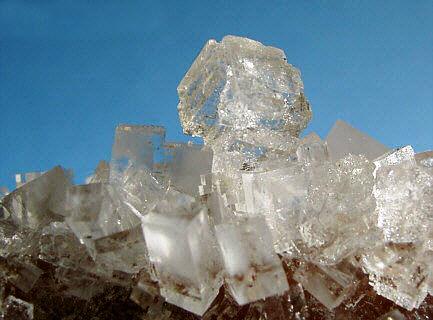The Salt of the Earth
Matthew 5:13
Ye are the salt of the earth: but if the salt have lost his savour, wherewith shall it be salted? it is thenceforth good for nothing, but to be cast out, and to be trodden under foot of men.
There are many different kinds of salts that occur naturally in our environment. Yet, only one of those salts stirs our taste buds. That salt – sodium chloride – is the tastiest of all the salts and the one that all living things need. The amazing chemistry behind this mystery shows that this is no accident.
 The sodium in common table salt is crucially important in keeping the body’s water in balance. That makes common table salt irreplaceable for most land animals and humans. We cannot taste anything unless its molecules are able to get into the dense network of filaments that coat our taste buds. Most salts, such as aluminum or magnesium salts, offer no appealing flavor. This is because the molecules that make up these salts are too large to get through the filaments around our taste buds.
The sodium in common table salt is crucially important in keeping the body’s water in balance. That makes common table salt irreplaceable for most land animals and humans. We cannot taste anything unless its molecules are able to get into the dense network of filaments that coat our taste buds. Most salts, such as aluminum or magnesium salts, offer no appealing flavor. This is because the molecules that make up these salts are too large to get through the filaments around our taste buds.
So sodium chloride, common table salt, is a carefully designed molecule. We need the sodium, but can’t really taste it. The chloride, however, is small enough to get into our taste buds and provide that salty taste. Linked together, each part of the molecule serves a crucial purpose in giving salt its flavor.
There are many beliefs among humans and many types of behavior. However, there is no other way to come to our Creator and God than through the forgiveness of sins that’s found in Jesus Christ. Nor is there any other way for us to be truly God’s salt in the world than by making His forgiveness, Word and will part of our very beings.
Prayer:
I thank You, Lord, that even the molecular designs in Your creation serve to make life possible. I pray that my life may be so thoroughly informed by Your Word that I cannot help but be true salt in witness to Your salvation. Amen.
Notes:
Ezzell, Carol. 1991. “Salt’s technique for tickling the taste buds.” Science News, Vol. 140, p. 276. Photo: Salt crystals. Courtesy of W.J.Pilsak. (CC BY-SA 3.0)